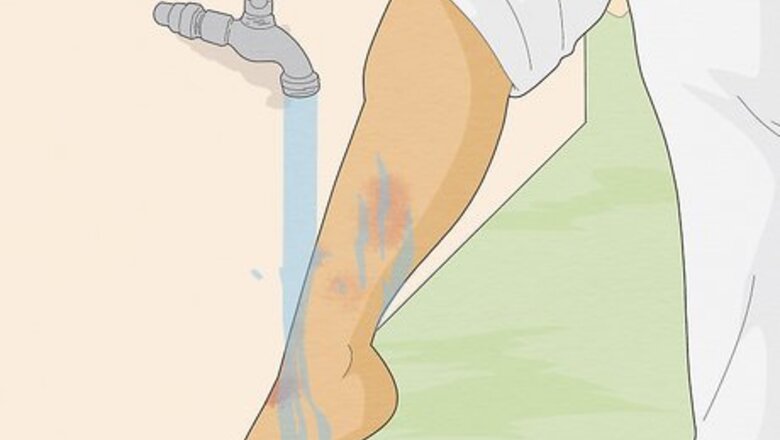
views
X
Research source
Since scratching can spread the rash, it's important to avoid irritating the rash while you quickly dry it up. Once you've gotten rid of the rash, learn how to avoid poisonous plants on future nature walks.
Washing and Soothing Your Skin
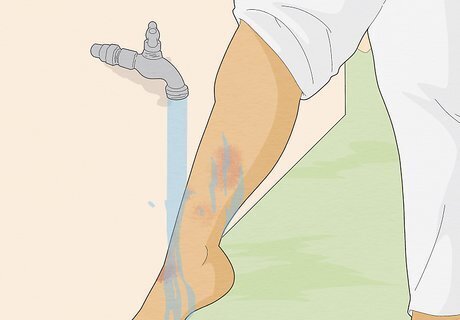
Wash your skin. As soon as you realize that you've accidentally come into contact with poison ivy, wash your skin very thoroughly. Use lots of warm, soapy water. If you can, wash within the first 30 minutes of touching the poison ivy. If you're still outdoors, find a stream or creek. Place the affected area in the running water for at least 10 minutes. You should also wash underneath your fingernails. If you're washing up at home, wash all of your clothes and shoes or boots as well.
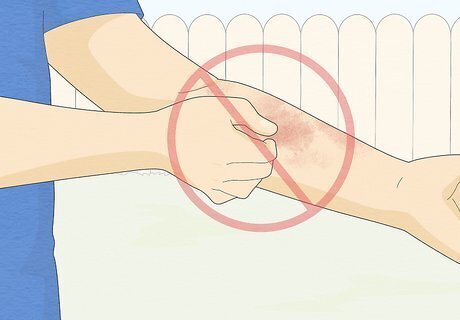
Avoid touching the rash. A poison ivy rash can easily spread by simply scratching or touching. If you've come into contact with poison ivy or have a rash, do not touch anywhere around your eyes, mouth, or genitals. All parts of a poison ivy plant (even dead plants) contain an oily allergen called urushiol. This causes a rash or blisters if it comes into contact with your skin or you breathe it in. If you do get a rash around your eyes, mouth or genitals, you should see your doctor immediately.
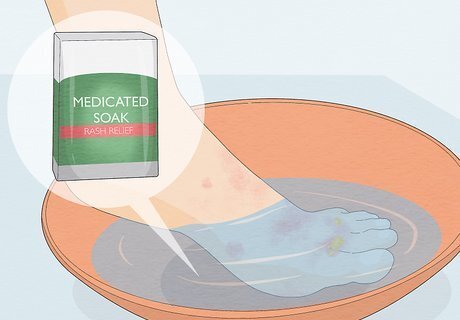
Soak in an astringent bath. If you have blisters from the poison ivy, never break them open since this increases your risk of infection and scarring. Instead, soak your blisters in a bath with a solution of Burow's solution. You can buy a product containing this solution of aluminum sulfate and aluminum acetate at a drugstore or pharmacy. Soak the blisters for 20 minutes at least two or three times a day. Soaking in Burow's solution acts as an astringent which can reduce the size of the blisters and help dry them out.
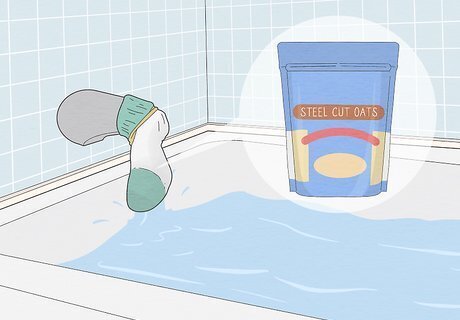
Soak in a bath. Fill a sock or nylon knee-high with steel-cut oatmeal. Tie the filled sock onto the tap of your bathtub. Run a cool bath so that the water runs through the oatmeal and into the tub. Soak in the oatmeal bath as long and as often as you like. Studies have shown that oatmeal is great for soothing your rash and relieving itchiness. The less you scratch your rash, the sooner it will dry up. You can also purchase an oatmeal bath product that you simply mix into your tub.
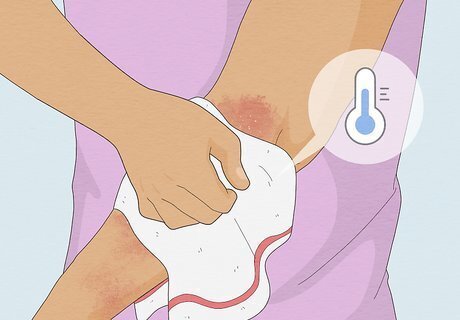
Use cool compresses. Soak a clean cotton towel in cold water and squeeze out the extra water. Place the cold cloth over the rash for as long as it stays cool. When it warms up, simply run the cloth under cold water and wring it out again. You can do this as often as you like. To make an astringent compress that dries out the rash, brew a pot of tea. Soak a clean towel in the cooled tea and apply it to your rash. When your body temperature is higher, your rash may seem itchier. Applying a cool compress can make the rash less itchy and soothe your skin.
Applying Topical Treatments
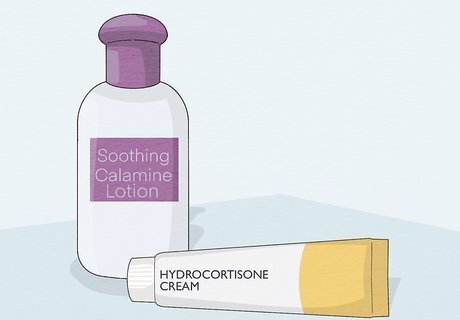
Apply an anti-itching and drying product. Once you've washed the oily allergen off of your skin, you should apply a product to relieve itching and help dry up the rash quickly. You can purchase calamine lotion and over-the-counter (OTC) hydrocortisone cream at a drugstore or pharmacy. Calamine will dry up any oozing or weeping coming from your poison ivy rash. Hydrocortisone relieves redness, swelling, and itching caused by poison ivy. You can purchase calamine lotion and over-the-counter (OTC) hydrocortisone cream at a drugstore or pharmacy.
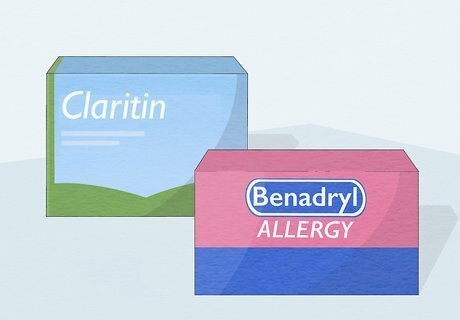
Take an over-the-counter antihistamine. Try OTC antihistamines like brompheniramine, cetirizine, chlorpheniramine or diphenhydramine. These can help block the allergen that's causing your reaction to poison ivy. You may want to take diphenhydramine at night since it can make you drowsy and use loratadine or cetirizine for during the day. Always follow the manufacturer's dosing instructions.
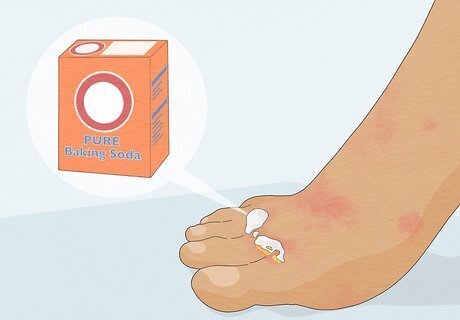
Apply a drying astringent. It may be difficult to leave a poison ivy blister alone if the blister is large. To draw out the fluid in the blister and reduce the size of the blister, make an astringent paste. Combine baking soda with just enough water to make a paste and apply it directly to your rash or blisters. Or if your rash is large, add a cup of baking soda to a tub of cool water and soak in it for at least 30 minutes. For smaller rashes, dab some witch hazel or apple cider vinegar onto the rash. You can also soak a green or black tea bag in water and apply the tea bag directly to the rash.
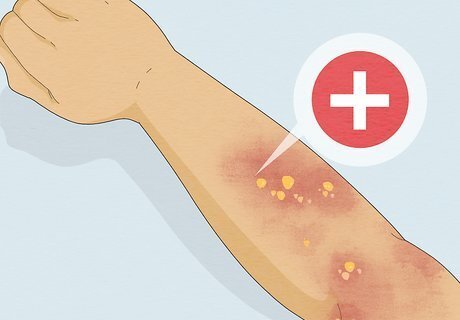
Get medical treatment. While the worst part of a poison ivy rash is the first few days, it will clear up within a few weeks. If the rash covers a large portion of your body or the itching is very severe (even after trying treatments), call your doctor. You may need prescription-strength oral steroids or antihistamines. You should also call your doctor if: You have a temperature over 100.4°F (38°C) The rash is oozing pus or has soft yellow scabs The itching gets worse or prevents you from sleeping The rash doesn't seem to improve within a few weeks
Recognizing and Avoiding Poison Ivy
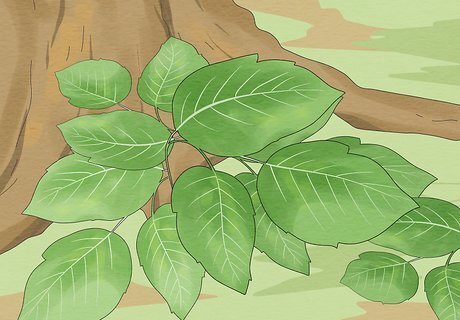
Distinguish between poison ivy and other leafy plants. Poison ivy usually grows as a vine or a shrub and has clumps of three leaves. You may have heard the rhyme, “Leaves of three, let it be.” But other plants also grow as three leaves from a single stem (like blackberry, raspberry, and box elder). The main difference is that in the poison ivy plant, the middle or central leaf grows from a longer single stem. Poison ivy is usually glossy and the leaves might have red stems or reddish leaves. To determine if a plant is poison ivy, look for hairy tendrils on the main vine. These let the plant climb and grow.
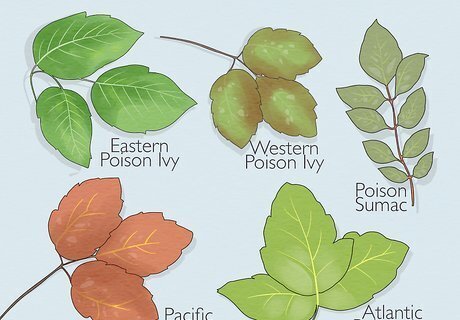
Learn what grows in your area. Poison ivy plants can grow all year long and throughout most of the United States. For example, your region may have poisonous sumac or oak. The following regions have these poisonous plants: Eastern poison ivy: these vines grow on the ground and can climb Western poison ivy: these vines only grow on the ground Pacific poison oak: this grows as a shrub, ground vine, and climbing vine Atlantic poison oak: this is a ground vine and shrub (but not very common) Poison sumac is a small tree usually found in wet areas
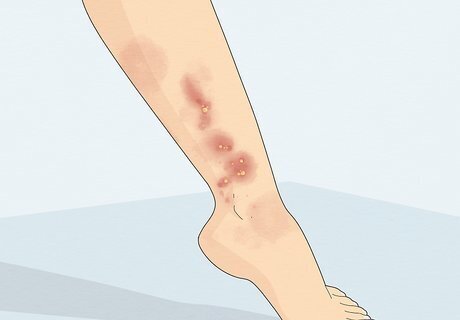
Check your skin for a rash. If you've come into contact with poison ivy, a rash will appear within minutes to hours (12 to 24 hours) of touching the oily allergen (urushiol). The rash will usually be red, itchy and swollen. Your rash might also have streaks if you brushed against the plant. The fluid-filled blisters can also form, but they don't spread the rash. Don't be surprised if it takes up to three days for a poison ivy rash to develop.
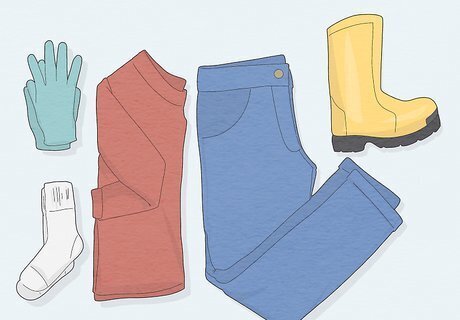
Wear protective clothing. If you know you'll be hiking in an area with poison ivy or you'll be clearing the plant from your yard, wear clothing that prevents the oil from brushing against your skin. Wear long pants and shirts, socks, boots, and vinyl gloves. If your clothes have come into contact with poison ivy, wash your clothing as soon as you can and avoid touching the clothes with bare hands. You should also wash your shoes and any outdoor gear you used to clear the poison ivy.
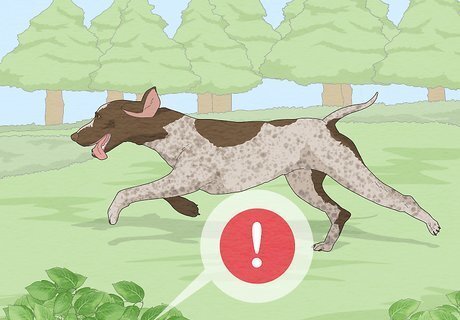
Watch where your pets wander. If you have a pet that likes to romp through the brush or lives outdoors, be aware that they could potentially carry the oil on their fur. If the oil comes into contact with their skin (the belly of a dog, for instance), your pet may also suffer a rash. But if they just brush by the plant and get the oil on their fur, they will not be affected. If you go to pet or hold them, however, you will be exposing yourself to the oil and may suffer a rash. Try to keep an eye on your pets when they are outdoors. If you see them come into contact with poison ivy, wear protective gloves and give them a bath to remove the oil from the fur and prevent them from spreading it.
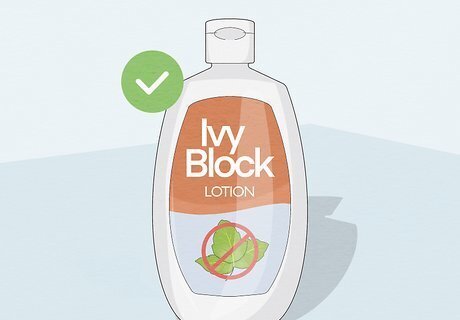
Apply an ivy-block barrier. Before going on a walk in the woods, you may want to apply a skincare product that prevents poison ivy oil from getting on your skin. You can purchase an ivy-block barrier from a drugstore. Look for a product that contains a 5% solution of bentoquatam. Apply the thick cream 15 minutes before you'll be encountering poison ivy. Reapply the ivy-block barrier every four hours. To remove the cream, wash it off using soap and water. Avoid using the barrier cream on kids under six years old.




















Comments
0 comment